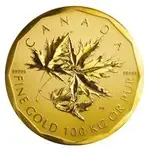Although gold jewelry is talked about, on md'ing forums, as being a "low conductor" (like, as in nickels, aluminum foil, etc...) pure gold (24 k) is actually a very high conductor. Ie.: a thin teensy 24k ring can read up in the penny area of TID (some Asian cultures actually make pure gold jewelry). But to make gold harder (and thus more sturdy for wear-able jewelry), alloys are added, to make them 10k, 14, 18k, etc.... It's the alloys that lower the conductivity.
But to be looking for a specific gold ring, in a sea of pulltabs, I don't think it's going to do you much good to be worrying about minute variations on the TID scale (based on the karot). The reason is, size comes into play. For example, if you took two exact same size gold bands, and one was 14k, and the other was 18k, Yes, they might have a slightly different TID. But that assumes you knew the exact size. So unless you have sampled your friend's ring ahead of time (or have an exactly same sized sister ring to pass by your loop in an air test), you still won't know what you're looking for. So even if you knew the ring you are looking for is 18k (or 10k, or 14k, etc...) it can STILL read all over the spectrum, based on the size of the ring. A teensy thin ladies solitaire 14K (or 10k, or 18k) can read down in foil-ish range. But a big honking man's 14k (or 10k, or 18k) college class ring can read up in the square tab range.
About the only way you're going to find a gold ring in a sea of pulltabs, without having first sampled its TID, is to dig all your low and mid conductors. You can lower your junk ratio by assuming that the ring is close to the surface, and thus ignore anything buried below the grass level (assuming it was just recently lost).






